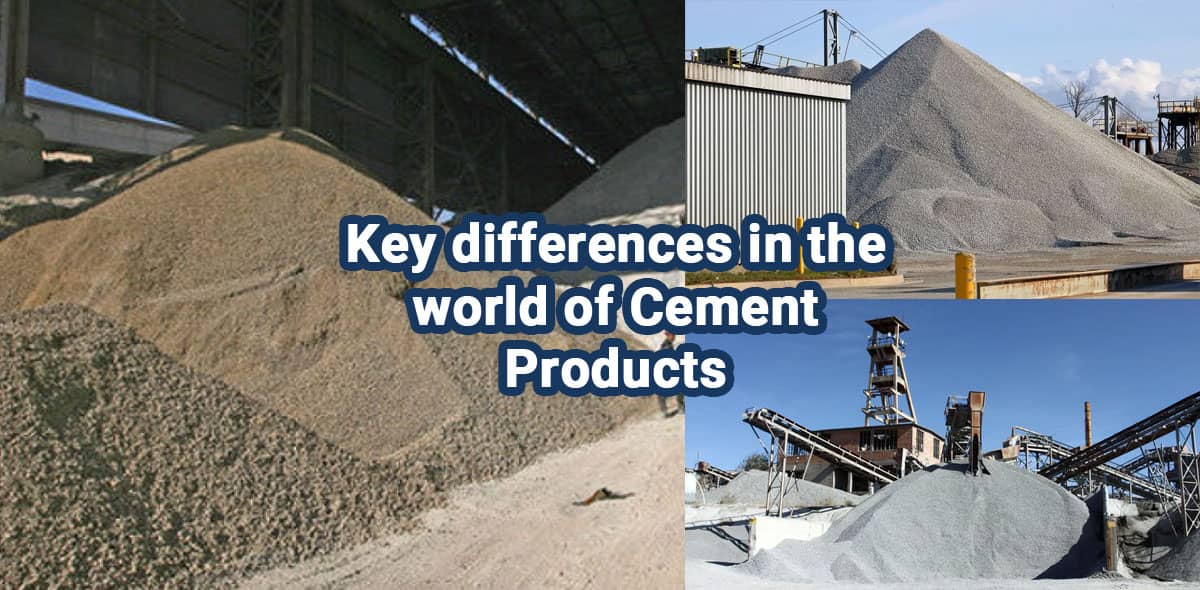Key differences in the world of Cement Products

Define Mortar
The mixture of cement, sand, and water makes a thick paste that binds two surfaces together. Building projects use it primarily for tying together stones, concrete, and bricks.
Define Grout
Pavers are typically made out of ceramic or stone tile grout, which is highly viscous and used as filler between the tiles. As a result, tiles remain in place because of mortar below rather than grout because grout acts as a binder, but it is not an adhesive.
Types of Mortar
Lime Mortar
You can use lime mortar in various ways, such as lime and sand mortar, lime and cinder mortar, or lime and sand mortar. In order for it to harden, it must lose water, absorb carbon dioxide from the air, and eventually re-crystallize.
Cement Mortar
Sand and water are the main ingredients in cement mortar. Its strength makes it a suitable material for the construction of structures that undergo heavy loads.
Lime-Cement Mortar
Lime-Cement mortar is also known as gauged mortar. Cement will improve hydraulic properties, set time, and strength of lime mortar made from fat lime. So, it is best to add cement no more than an hour before using the lime mortar.
Types of Grout
Latex Grout
Latex grout is suitable for normal-use installations. Joints are stain- and wear-resistant by mixing Portland cement with latex. Sand-Portland cement grout is less rigid and less permeable to water, so it can move more and expose to more moisture than sand-Portland cement grout. For this reason, the grout is particularly suited to tub and shower areas.
Epoxy Grout
This system consists of two components: epoxy resin and hardener. However, different formulations are available, each designed for a specific type of ceramic tile. In conjunction with epoxy mortar or epoxy adhesive, it is highly stain-resistant and impervious.
It is usually expensive and requires special skills to operate. Unlike coarse fillers, epoxy grout does not scratch glazed wall tile or mosaic tile. As a result, industrial and commercial installations with a high need for chemical resistance are ideal for this product.
Furan Rosin Grout
An additional component of furan resin grout, a hardener, binds the two parts together. Chemical resistance is a key factor for its use in industrial areas. Furthermore, you usually need a furan mortar to use it.
Silicone Rubber Grout
It is a non-smudging silicon rubber grout system that is stain, moisture, mildew, cracking, crazing, and shrinkage-resistant after curing. As a result, it adheres strongly to tiles, dries rapidly, and is resistant to moisture, subfreezing temperatures, and humid, hot conditions.
Key Differences between Mortar & Grout
| Numbering | Mortar | Grout |
| 1 | Using cement, sand, lime, and water to make mortar. | A concrete grout can be made from cement, acrylic, sand, epoxy, and epoxy-acrylic. |
| 2 | In brick or stonemasonry, cement mortar functions primarily as a binder. | Grout's primary purpose is to fill cracks and tilling work. |
| 3 | Water-cement ratios are lower in mortar. | When compared to mortar, grout has a greater water-to-cement ratio. |
| 4 | There is little viscosity in mortar. | There is a higher viscosity in the grout. |
| 5 | The mortar has a greater degree of stiffness. | Grout has less stiffness. |
| 6 | The color of mortar is usually that of cement. | Different colors of grout are available based on the requirements. |
| 7 | Curing is necessary to harden the mortar. | Providing enough water at the beginning of the hardening process is sufficient for curing the grout. |
| 8 | A trowel sticks to it well and it is easy to work with. | Trowels and other tools are difficult to use due to the high water content in Grout. |
| 9 | The setting time for mortar is longer than that of grout. | When compared to mortar, the setting time is shorter. |
| 10 | Materials such as this are used for laying down stones, concrete, and brick masonry. They are used to cover joints and improve plastering. | Tiles and cracks are filled with this product. During construction, grout is used to prevent cracks and bed planes in weak areas. For dam foundations, grout is used to strengthen the ground. |
